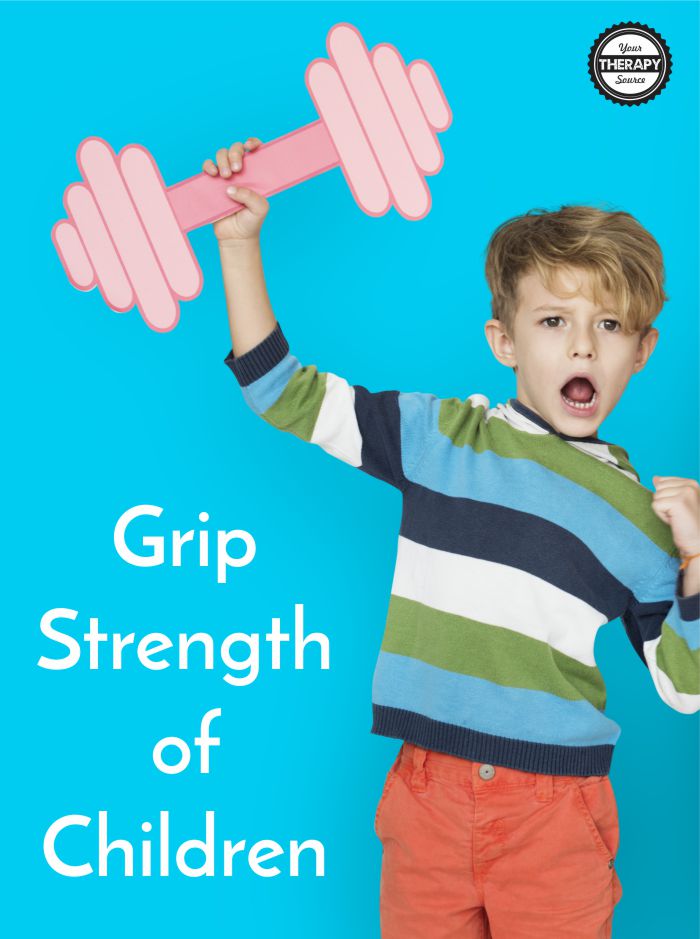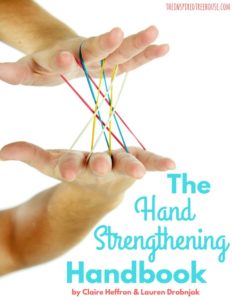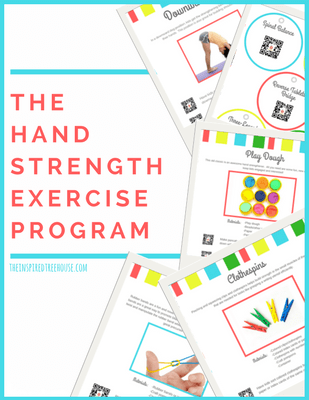Grip Strength of Children – What does the data say?
 Grip Strength of Children
Grip Strength of Children
Decreased grip strength is frequently present in children referred to occupational and physical therapy. How do you measure the grip strength of children during your evaluations or annual reassessments? Do you use clinical observation to determine if the child’s handgrip strength is poor, fair or normal? Perhaps you assess functional skills to determine grip strength.
Assessing Grip Strength of Children
Accurate information is necessary to determine the degree of strength impairment. The grip strength of children can easily be assessed and compared to normative reference values using a dynamometer. A hand dynamometer is used for routine screening of grip strength and initial and ongoing evaluation of individuals with reduced hand strength. The subjects are asked to perform one submaximal practice trial followed by one maximal trial of 3 to 4 seconds from each hand. The peak force from the one maximal trial is then recorded for each hand.
Research on the Grip Strength of Children
Pediatric Physical Therapy published a cross-sectional study that compiled grip strength data from 2706 participants (91% right-hand dominant) ages 3 to 17 years old. The results of the study indicated the following:
-
dominant hand was significantly stronger than the non-dominant hand.
-
boys were significantly stronger than girls.
-
older children were significantly stronger than younger children.
-
a significant difference in the strength between the dominant and nondominant sides in 9- to 17-year-olds.
-
children younger than 9 years did not have a significant difference in grip strength between the dominant and non-dominant hand.
- greater strength in the dominant hand in boys compared to girls and with each yearly increase in age.
The researchers compiled the data to create normative data for each side (dominant and non-dominant), sex, and age. In addition, regression equations using age and weight as variables of grip strength are provided for each side by sex.
The normative data is included in the research study.
Reference: Bohannon, R. W., Wang, Y. C., Bubela, D., & Gershon, R. C. (2017). Handgrip Strength: A Population-Based Study of Norms and Age Trajectories for 3-to 17-Year-Olds. Pediatric Physical Therapy, 29(2), 118-123.
Looking for MORE easy, fun ideas for hand strengthening activities for kids that require little to no equipment and no, extensive preparation? The Hand Strengthening Workbook here.
The Hand Strengthening Exercise Program, created by Claire Heffron OTR/L and Lauren Drobnjak PT, includes fun and creative hand exercises and activities for kids to help them build strength in the hands and fingers! If you want to help children with activities like handwriting, cutting with scissors, squeezing a glue bottle, or completing clothing fasteners, then hand strengthening exercises may be the place to start.




